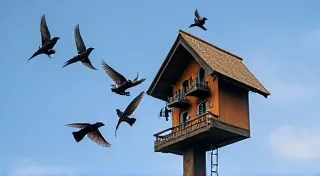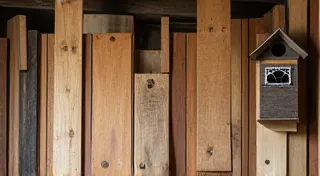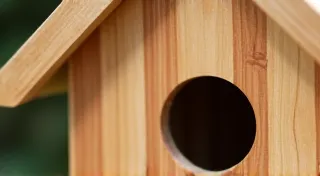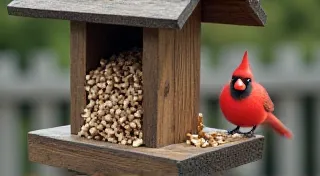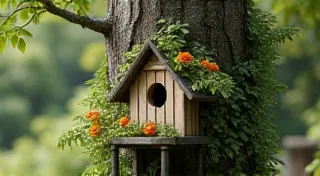DIY Bird House Roof Designs: Protection from the Elements
Building a bird house is a rewarding woodworking project, offering a safe and cozy haven for our feathered friends. While the walls and floor are important, the roof plays a crucial role. It's the first line of defense against the elements, providing vital protection from rain, snow, sun, and wind. A well-designed roof can significantly impact the bird house’s longevity and the comfort of its inhabitants. This article will explore various bird house roof designs and the considerations involved in ensuring adequate weatherproofing.
Why Roof Design Matters
Think about your own home – a good roof is essential. The same principle applies to bird houses. Exposure to the elements can quickly degrade a poorly designed roof, leading to leaks, rot, and discomfort for the birds. Strong winds can also damage a flimsy structure. A properly sloped roof sheds water effectively, while an overhang provides extra protection from rain and sun. The materials you choose also contribute significantly to the roof's durability. It's worth remembering that providing a suitable nesting space for birds can be surprisingly simple – sometimes, all they need is a well-placed Design a Robin Nesting Platform: Open-Air Bird Housing to start a family.
Common Bird House Roof Designs
Let’s look at some popular roof designs and their pros and cons:
1. Gable Roof
The gable roof, with its two sloping sides, is a classic and highly effective design. It provides excellent drainage and allows for ventilation. The angle of the slope (the pitch) is crucial; a steeper pitch sheds water and snow more easily. A slight overhang provides shade and protection from rain. It is aesthetically pleasing and relatively easy to construct.
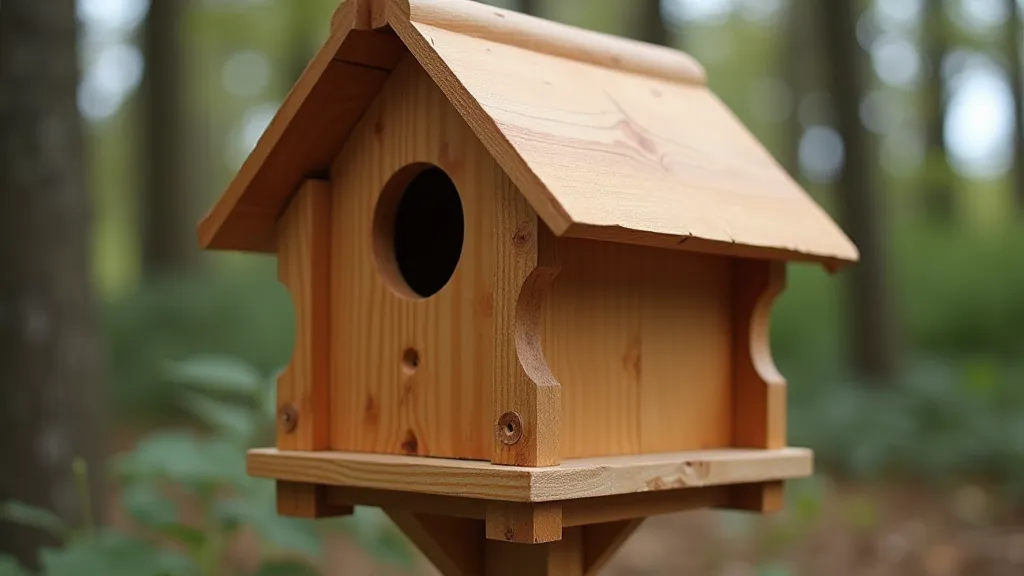
2. Shed Roof
A shed roof, also known as a lean-to roof, is a simpler design consisting of a single sloping surface. It’s quicker to build than a gable roof and provides adequate protection as long as the slope is sufficient. Shed roofs often lend themselves to a more modern or rustic aesthetic. If you're looking for a project to get started with woodworking for birds, even something simple like a Build a Wren House: Small Space, Big Impact, can build your skills.
3. Hip Roof
A hip roof slopes downwards on all four sides. It offers excellent stability and wind resistance, making it suitable for areas prone to strong winds. Hip roofs are a bit more complex to build than gable or shed roofs, but provide all-around protection.
4. Flat Roof
While not as common, a slightly angled flat roof can work, provided it has a proper drainage system to prevent water accumulation. This design is simplest, but requires careful construction to ensure water does not pool.
Key Considerations for Bird House Roofs
Here are factors to keep in mind when designing and building your bird house roof:
Pitch (Roof Angle)
A steeper pitch generally sheds water and snow more effectively. Consider the climate in your area when choosing a pitch. Areas with heavy snowfall require a steeper angle.
Overhang
An overhang extending beyond the walls of the bird house provides added protection from rain, sun, and wind. It also helps to shield the entrance from the elements.
Materials
Choose durable, weather-resistant materials. Cedar, redwood, and pine are popular choices. Avoid using treated wood as it can be harmful to birds. Consider using waterproof sealant or wood preservative to further protect the roof.
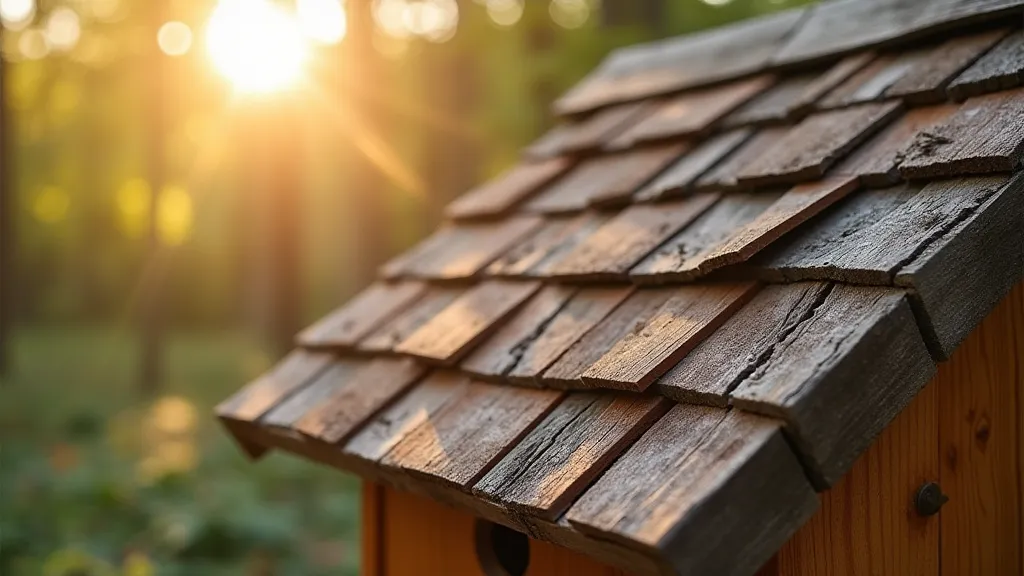
Ventilation
Proper ventilation is important to prevent overheating in the summer. A small gap between the roof and walls can provide adequate ventilation. Avoid completely sealing the roof. Good airflow not only keeps the inhabitants cool, but also reduces the risk of moisture buildup, extending the lifespan of your birdhouse.
Secure Attachment
The roof must be securely attached to the bird house structure to prevent it from being blown off in strong winds. Use sturdy screws or nails and ensure the attachment points are well-reinforced.
Material Selection
The best materials for your bird house roof are durable and resistant to the elements. Here's a quick overview:
- Cedar: Naturally rot-resistant, lightweight, and attractive.
- Redwood: Similar to cedar, with excellent durability.
- Pine: A more affordable option, but requires treatment or sealant for weather protection.
- Shingles: Provide a decorative and weather-resistant finish.
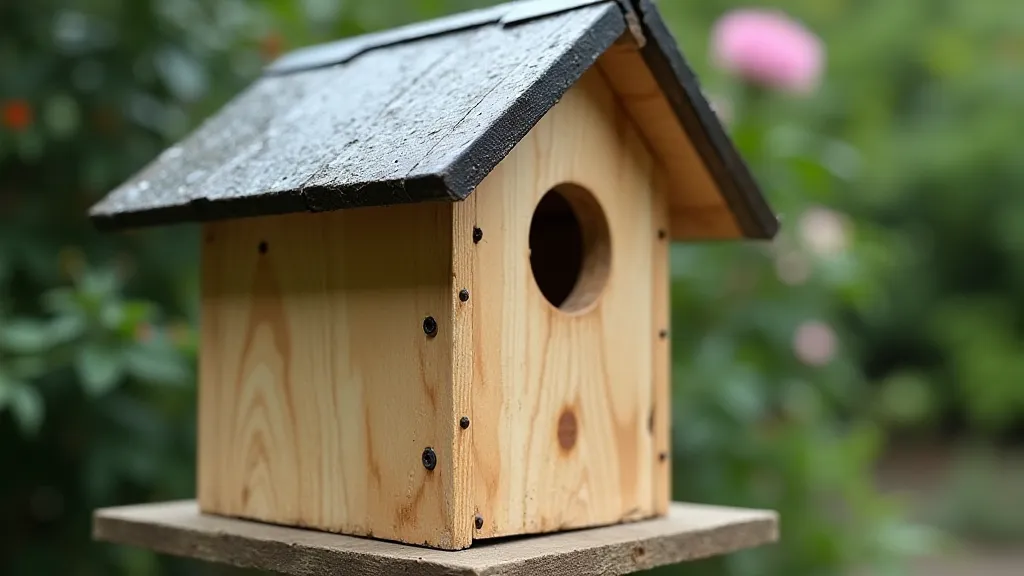
Choosing the right materials is critical for longevity. For species that prefer more structured housing, such as Purple Martins, the construction requirements are a bit more involved. If you are interested in building a more complex bird house, you should look into DIY Purple Martin House: Design & Construction for Success.
Advanced Design Considerations
Beyond the basic roof styles and material choices, several advanced design elements can significantly improve the bird house's performance and attractiveness to birds.
Roof Slope and Snow Load
In regions with significant snowfall, the roof’s slope becomes even more crucial. A steeper pitch (greater than 45 degrees) is recommended to prevent snow accumulation and potential roof collapse. It’s also worth noting that consistently heavy snow loads can stress the structure of the bird house, so ensure the frame is robust enough to handle the weight. Consider reinforcing corners and using thicker lumber in snowy climates.
Solar Reflectivity and Heat Management
Dark-colored roofs absorb more heat, potentially raising the internal temperature of the bird house to uncomfortable levels during hot summer days. Choosing lighter-colored materials or applying reflective coatings can help mitigate this issue. Remember that birds are sensitive to temperature extremes, and overheating can be detrimental to their health and survival.
Predator Protection
The roof design can also play a role in predator protection. An overhanging roof can make it more difficult for cats or other animals to reach the entrance. A strategically placed baffle or other deterrent can further enhance the bird house's security. Regular inspection and maintenance are crucial to ensure the bird house remains a safe haven for its inhabitants.
Sustainability and Eco-Friendliness
When choosing materials for your bird house, consider their environmental impact. Opt for sustainably harvested lumber, recycled materials, or alternatives like reclaimed wood. Avoid using treated wood that may contain harmful chemicals. By making eco-friendly choices, you can create a bird house that is both beautiful and beneficial to the environment.
Conclusion
A well-designed and properly constructed roof is essential for a functional and durable bird house. By considering the design elements discussed in this article, you can create a safe, comfortable, and long-lasting haven for your feathered neighbors. Remember to prioritize weather protection and durability to ensure your bird house stands the test of time. Building a bird house is more than just a woodworking project; it’s an opportunity to connect with nature and provide valuable habitat for local birds. And if you’re feeling inspired to take your skills to the next level, remember that careful planning and precise execution, regardless of the design complexity, are key to success—whether building a simple wren house or a more elaborate structure.
